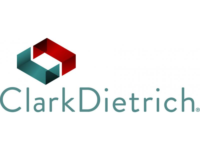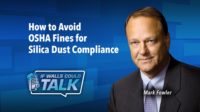“Greenwashing” is a relatively new term in the history of construction. It means to be deceptive with the attempt to present a product or method of construction that is environmentally friendly when compared to more traditional methods, or when compared to a competitor. This has become a contentious—and sometimes serious—issue in the construction trades. The drive for carbon neutral and sustainable construction has been boosted by the LEED rating system developed by the United States Green Building Council.
Greenwashing is often described as a form of deceitful marketing/deception, claiming a product has some special material components or was manufactured in a way that helps to lower the carbon footprint or saves the earth. Architects are the prime targets for greenwashing, as they typically make selections on products or systems for structures. Most architects are very conscientious about the environment we live in and driven to reach a carbon neutral footprint.
Reading any of the trade magazines that are for architects, such as Architectural Record, can verify their desire and the overall industry push for greener and more sustainable buildings. This is essentially good for the world and is needed to preserve the future of our resources and the life of our planet. This impacts all of us.
A Different Mindset
While subcontractors tend to be less environmentally conscious than most architects, they actually do care about our planet. Subcontractors are just a little closer to the project at the ground level and know what does and does not work. Most subcontractors have known about greenwashing for some time and see it as a major problem. This has led many architects to believe they do not care about the earth and are just being stubborn about change.
Working with various subcontractor groups, I know they have reservations with the word “green.” It is not the idea of saving the planet, but it’s the misleading data or deceptive marketing that is being flagrantly bantered about to sell goods and services, with seemingly no repercussions for the perpetrators of greenwashing. There is good news for these subcontractors.
I was on webinar conducted by the Federal Trade Commission on anti-trust issues for trade associations and at the conclusion of the presentation, a leader of the commission came in to speak on upcoming FTC issues. One that caught my ear was her comment on the Green Guides. These are published regulations and rules that organizations and corporations must adhere to when publishing data about green or sustainable products.
The speaker noted that the FTC is very aware of greenwashing and plan to make 2023 the year they will tackle this problem. The first step is to revise the FTC Green Guides, as it has been over a decade since they were revised. So, those that practice greenwashing should start to re-think their plans.
The Right Approach
The first thing to understand is there is a difference between green and sustainable. While many believe the terms are interchangeable, they are not. Where buildings are concerned, they apply to different scenarios relating to the building’s life-cycle. According to the British Assessment Bureau, the term “green” is strictly about the environment. Whereas to be sustainable, a building needs to hit the three pillars of sustainable construction: People, planet and profit.
A sustainable building puts sustainability at the heart of every stage of its life-cycle. This is not an easy task and has significant complexities to the process—especially when trying to get a project certified.
The people and planet “Ps” are complex but pretty obviously state that we need to protect people and the planet. It is the third “P” that seems to be least spoken about and possibly more controversial. Profit does not mean profit margins to contractors, suppliers or manufacturers. It is regarding the life-cycle of the building and the owner’s profitable nature with owning and maintaining the building. For example, assume the designer found a green product with a few environmentally friendly advantages but it would only last half the life-span of another product that was slightly less green. The replacement cost of the system or product would not be profitable to the building owner. This would not be a sustainable product as life-cycle is critical to sustainability.
The Building for Environmental and Economical Sustainability is a good U.S. Government source for reliable life-cycle data on a wide variety of construction materials or systems. The following link is a description of the program, and covers how to use the online software program. The National Institute of Science and Technology spent years putting this data together.






Report Abusive Comment